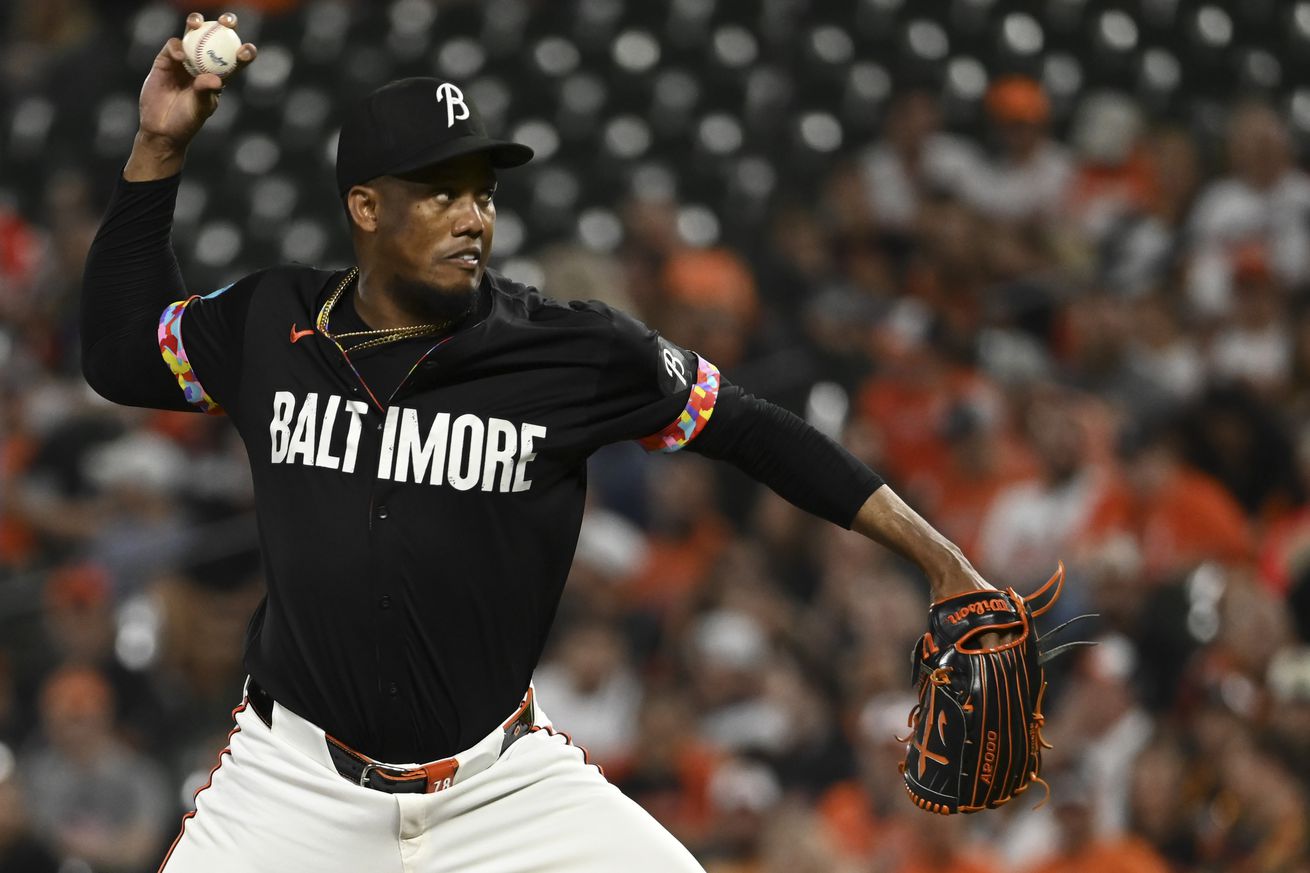
The 30-year-old Cano failed to replicate his dominant rookie campaign but still provided steady relief for a majority of the season.
Baltimore’s winning window took a significant blow when Félix Bautista suffered a UCL injury back in August 2023. The Orioles felt the impact right away, and Craig Kimbrel failed in the closer role last season. The O’s suffered quick postseason defeats in consecutive years without their best reliever, and The Mountain proved too large to replace.
Yennier Cano burst onto the scene in 2023. The former Minnesota prospect earned an All-Star appearance during his rookie year, and the Orioles quickly emerged as the “winner” in the Jorge López deal that also netted Cade Povich. Cano served as the perfect setup man for Bautista, but the vibes changed when the big man went down.
The rookie only allowed eight earned runs over 50.1 innings when pitching in the seventh or eighth, but he allowed nine earned runs in 21.1 innings when asked to finish the ninth. The results likely factored into Baltimore’s decision to sign Kimbrel and not hand Cano the closer role in 2024.
Cano went on to have a fine season. He finished the year with a 4-3 record, 3.15 ERA, 1.300 WHIP, 65 strikeouts, and 24 walks. His ERA+ ranked higher than league average at 120, and his 3.55 FIP eliminated the “bad luck” label. He did not dominate but still served as relatively reliable reliever for a majority of the season.
Even with Kimbrel’s struggles, Cano finished the year with only five saves. The Orioles acquired Seranthony Domínguez and Gregory Soto at the trade deadline in an effort to boost an underwhelming bullpen. The loss of Danny Coulombe hurt, but guys like Cano and Cionel Pérez failed to raise to the occasion.
Relievers are notoriously volatile from season to season. It was probably unfair to ask Cano to repeat his success from 2023, but he sure set the bar high in his debut. He was a little old for his sophomore campaign at age 30, but his fastball velocity remained steady at 96 MPH.
Cano makes his living with an impressive sinker that he throws just over half the time (51.5%). Batters actually posted a higher Whiff Percentage (21.1%) on the pitch in 2024, but they also hit the pitch better with a .275 batting average. Hitters make adjustments over time, but Cano pointed to his own mistakes in the middle of the season.
“I think it was a mechanical issue that was going on,” Cano said back in July. Cano credited the coaching staff for helping him watch film and make adjustments. He played his best baseball in July and August after limping to the All Star break, but a few rough September outings prevented a true tale of two halves.
At 6-foot-4, Cano’s ability to field his position often came in clutch. He ranked among the best in ground ball percentage (63.5%) and launch angle (-1.9). Unfortunately, hitters were able to punish Cano when he hung a sinker or slider up in the zone. Cano allowed six homers on the season, but five of the long balls came in the first half.
Cano’s ERA bounced around throughout the season, but his FIP topped out at 4.94 on June 28. The number steadily dropped over the second half, which should provide confidence heading into 2025.
Cano figures to play a significant role in the bullpen next season, and he should benefit from Bautista’s return. He will become arbitration eligible in 2026 and cannot elect free agency until 2029.
Previous 2024 player reviews: Keegan Akin, Cionel Pérez, Cole Irvin, Ryan O’Hearn, Craig Kimbrel, Cade Povich, midseason position player acquisitions, Jackson Holliday, injured starting pitchers, James McCann, midseason pitching acquisitions, Jorge Mateo
Tomorrow: Dean Kremer